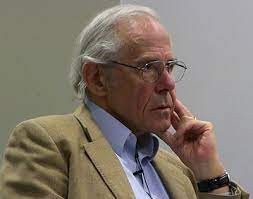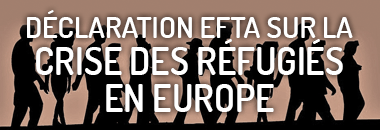EUROPEAN FAMILY THERAPY ASSOCIATION
CONNECTING FAMILY THERAPISTS AND TRAINERS
Alfredo Canevaro
(1938) Psychiatrist and psychotherapist. Founder of the “Review Terapia Familiar” in Argentina

Matteo Selvini: He arrived in Italy in 1988, looking for a stable and secure life for his four children, leaving a prestigious career and an excellent reputation in Buenos Ayres. He went to live in Macerata, his wife’s country of origin. A truly difficult leap from a cosmopolitan metropolis to the Italian province!
My mom knew him well, Alfredo had invited her to Argentina years before, she admired him very much as a professional and also as a man, she called him « el’ hidalgo« . It therefore became natural to invite him to collaborate with us in Milan.
Precisely at the end of the nineties, Mara gradually retired and Alfredo took her place, as our mentor and adviser. And not only that, in the early 2000s a large number of our colleagues and students entered therapy with him. We lived precisely the experience of the enlargement to significant family members, we lived this experience through the students and this convinced us to introduce the multifamily in the personal training path (genogram) of our school. An experience that has continued to excite us for seventeen years!
Yara Doumit-Naufal: During a conference, Alfredo Canevaro led a workshop focused on intimacy in couples, presenting a typical situation from his therapies. He needed volunteers for a modeling exercise, and naively, I offered myself. He then chose a man to join me. After some explanations, I realized what was in store for me.
We sat face to face, our knees touching, and remained looking at each other in silence, hand in hand, for a long while. Then, with our eyes closed, we began to explore each other’s face: the forehead, hair, neck, ears, cheeks, nose, returning to the forehead, then back to the hair…
That moment seemed endless, under the gaze of dozens of people. The debriefing that followed was intense. The next day, on the second day of the conference, upon seeing the man who had been my partner in the exercise, I instinctively changed my path.
Umberta Telfener: Alfredo told once a disturbing event that occurred in his life: it was 1959, he was preparing for the physiology exam at the Medical School in Buenos Aires with professor Braun-Menéndez, Nobel Prize candidate. He had arranged with his sister to go to Mar de la Plata for the weekend but, not feeling prepared enough for the exam, he canceled the flight and gave up on the trip. He later learned that his plane had crashed and all the passengers were dead, including the professor and his daughter. His sense of duty had saved him.
He also told me about his beginnings, when he worked with multifamily groups. It was 1967 and Garcia Badaracco had arrived in Buenos Aires and was experimenting with multi-family groups. The following year, in May 1968, they inaugurated a private clinic for life-threatening psychotic and schizophrenic patients with no future and their incurable families. Patients were hospitalized and families came to work in groups. Alfredo worked on this project for 15 years as deputy-director.
During his trainings around Europe and South America, Alfredo carried out an investigation that intrigued me a lot, because I too felt included in his statistics. He empirically investigated two aspects of the life of family therapy students. The first is the hypothesis that whoever chooses this profession is the failed therapist of their own family, as if the family of origin had implicitly said « Go, get informed and trained, but I won’t allow you to treat us. » Alfredo discovered that as many as 66% of the students he met in 5 countries (Italy, France, Spain, Argentina and Uruguay) were « Good Samaritans » who were trying to save families (including their own). 2/3 declared themselves « good guys » while the others acted like “black sheeps”. The proportion of his results is the same in all 5 countries.
The second question Alfredo asked had to do with an alternative career: “If you hadn’t been a clinician, what do you think you would have done?” he would ask. 38% responded that they would pursue artistic careers (singers, dancers, painters…); 10% would have become architects. Personally I recognize myself in the « architect, black sheep » category!
Speaking one day together about Argentine psychoanalysts, Pichon Riviére (operational groups) and Armando Bauleo, his student, both group analysts with a vision close to systemic, he told me one of his first cases, in which he had asked for the supervision of Pichon Riviére.
He had graduated in psychiatry a few years before, it was 1968; a colleague and friend of his from the University sent him a friend who was experiencing a drama. The client was left a widow with 5 children and, when her husband died in a car accident, she went crazy. She had sent her children to relatives and went out every night, drank and behaved « badly ». Alfredo calls the family together: the very harsh mother declares that Silvia « has lost her soul« , her two brothers are terribly critical. Her blood relatives wanted her to be hospitalized for life. Since Alfredo does not agree, they no longer come to therapy.
He manages then to involve Silvia’s aunt Conchita (his mother’s cousin), an extraordinary woman, and a family lawyer who bred purebred dogs as a hobby. The latter told him that when a bitch has had a litter and is threatened with death or has no food and milk, she kills the puppies so as not to make them suffer. A light bulb went on for Alfredo: Silvia had left her children to protect them, not to separate from them. He then began to defend Silvia and continued the sessions with the two « helpers ».
The patient suffered from a significant psychiatric problem; “I was looking for how to help her, I was looking for resources” – Alfredo tells me. In his research he discovered that Silvia’s mother had also suffered the death of her husband at the same age and that, when he died, her hair had turned all white overnight, from evening to morning. He also went to meet Silvia’s grandmother, much loved by the young woman, who was bedridden. She tells Alfredo her story, among other things that when 37 years old she become a widow, with five children and that she fell down the stairs and her menstruation stopped. Alfredo makes his first three-generational hypothesis: Silvia, in order to interrupt the family mandate (two women before her have suffered a trauma and suddenly turned gray (old) or lost their « femininity, their fertility”), decides to do something different and less harmful for her: she instead « goes crazy« , maintaining her feminine power, rebelling and giving in to mad joy. Silvia underwent two hospitalizations in total, took psychotropic drugs, then began to improve. She took back 4 of her five children, remarried and had another one.
Alfredo contacted her by phone forty years later and the two had a very pleasant conversation remembering hard and funny episodes.



